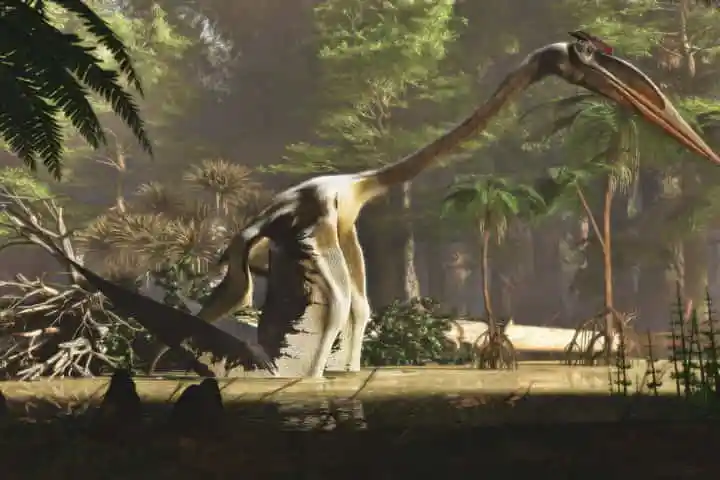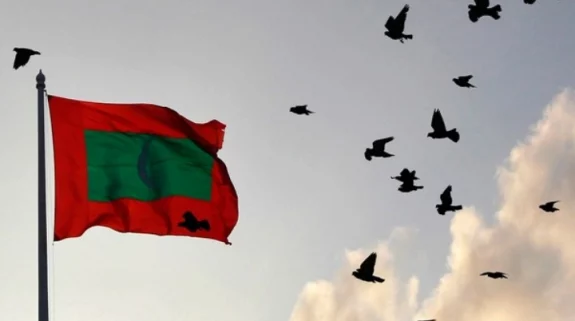Researchers have finally made a breakthrough when it comes to the largest flying being ever to have lived on the planet, according to an article in smithsonianmag.com.
As part of the bygone class of reptiles who flew, called pterosaurs, the Quetzalcoatlus were the largest ever to dominate the Earth’s skies. Its size was that of a giraffe and its other attributes included limbs which were thin, a long beak with was frightening and an amazing wingspan which measured 40 feet.
Discovered nearly five decades ago, it took a long time for the scientists and experts to put together the life of this unique being and these details are inclusive of how these giants managed to take-off from the ground to fly, states a report by Megan Marples for CNN.
Published in the Journal of Vertebrate Palaeontology, this new set of research gives the most embracive details on Quetzalcoatlus till now.’
Talking about this research, palaeontologist at the University of California, Berkeley, Kevin Padian, said in a Press release: "This ancient flying reptile is legendary, although most of the public conception of the animal is artistic, not scientific. This is the first real look at the entirety of the largest animal ever to fly, as far as we know. The results are revolutionary for the study of pterosaurs—the first animals, after insects, ever to evolve powered flight."
What made it so long and tough to discover the secrets of this powerful flyer? The reason lies in the fact that it had hollow bones to fly, like the modern day flyers.
Sharing his views on this, Matthew Brown, a vertebrate palaeontologist at the University of Texas, Austin, told CNN: "You have these sort of potato chip-like bones preserved in very hard rock, and you've got to remove the bones from the rock without destroying them.”
Careful study of the bones collection which were dug out from Texas Big Bend National Park by the team of analysts revealed that there were two new pterosaur species. While some hundreds of the bones were assigned to the smaller kind of Quetzalcoatlus with a 20 feet wingspan, a smaller number of bones – a few dozen – belonged to the larger one. The researchers were still able to piece together the new species and deduced what its appearance was, said the Press release.
Also read: The world wakes up to a new species of Dinosaurs with killer tails
Taking the expertise and help of an aerospace engineer and a biomechanic, the researchers were able to decipher as to how these ancient creatures managed to fly.
Earlier the palaeontologists had suggested that these giants took off by running and flapping their wings or like vampire bat, lurched forwards on its wingtips. Now, the new study proposed that the animal crouched, following which it launched itself eight feet in the air – providing itself with adequate space from the surface to be able to flap its wings and take off, reports George Dvorsky in Gizmodo.
Speaking about the effort of the researchers to understand these details Brown told USA Today: "(The team) applied a lot of the aerospace knowledge to understanding how something like airfoil works and how much speed you need to generate lift.”
Following the take-off, after the reptile was airborne, it flew well. In the release Padian commented: "Pterosaurs have huge breastbones, which is where the flight muscles attach, so there is no doubt that they were terrific flyers.”
Also read: Volcanic Eruptions Helped Dinosaurs Evolve And Dominate The Earth For 166 Million Years
Apart from unravelling how it flew, the recent research also threw light on the way Quetzalcoatlus lived. Its area of habitation was evergreen forest while it hunted in the water. As per Gizmodo article, the bigger variety of the creature acted like a heron, the long-necked bird that wallow through water.
Among the beings Quetzalcoatlus hunted and ate, according to the release, were critters like crabs, clams and worms out of freshwater bodies and to catch them they used their long beaks. The bigger variety of the species most probably were lone hunters while their smaller version may have been hunting in flocks at least during some part of the year – as suggested by the fossils of more than 30 individuals who were found at a single site, according to the press release.
Elaborating on the present study, Brown told USA Today: "You kind of have to shift your mindset to think about these as living, breathing animals and not just dead skeletons sitting in a drawer. Part of that is looking at modern animals that are alive today that have similar body types."
In fact Brown hopes that going beyond this comprehensive study, new and more details will be gathered when further excavations of fossils are done at the Big Bend. “That would be hugely informative and would really test a lot of our hypothesis about what these big animals look like based on the small ones.”




















